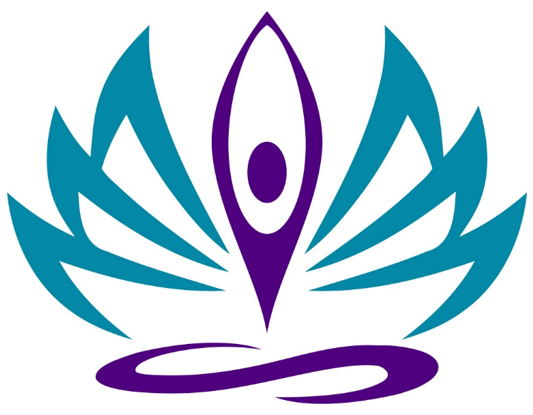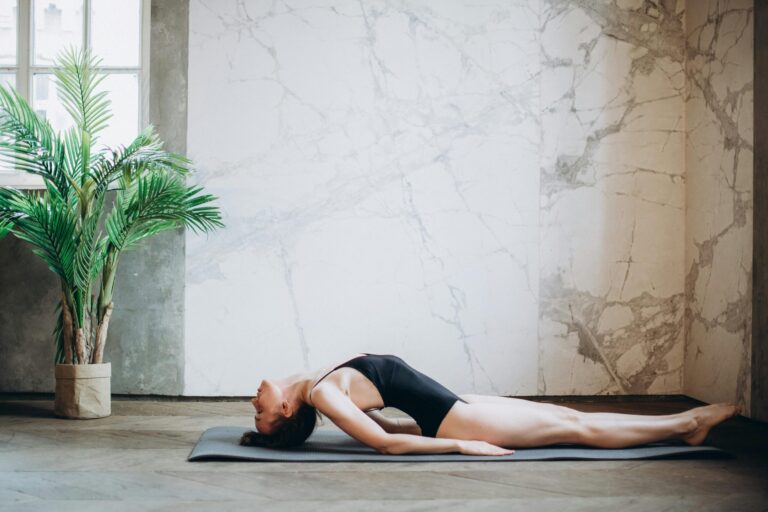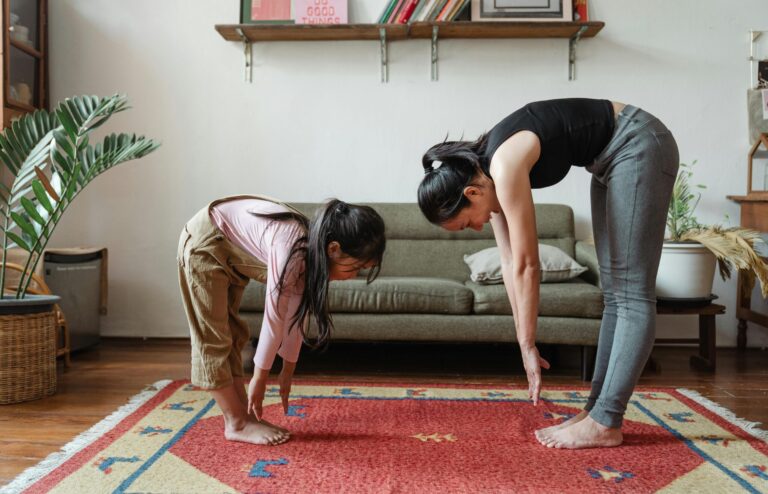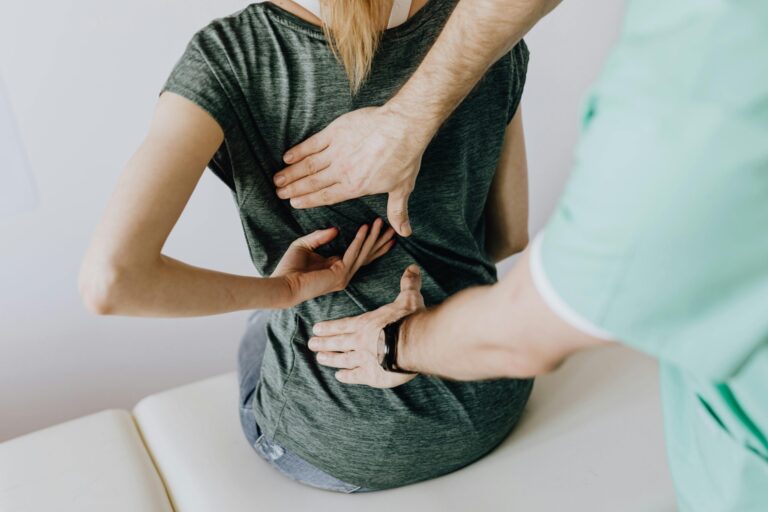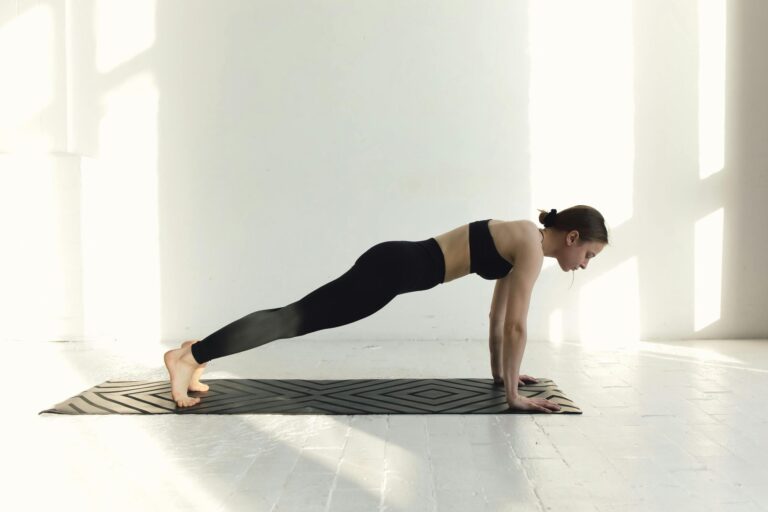Yoga for length in the flanks - How yoga heals your back pain and improves your posture
Do you often have back pain or feel tense after sitting for a long time? Then you're not alone! In our modern world, where many of us spend most of the day in front of a screen, poor posture is almost inevitable. But there is a simple and incredibly effective solution: yoga!
Why is posture so important?
Posture plays a crucial role in our well-being. If we are constantly in a bad posture, whether due to sitting or standing incorrectly, this can lead to tension, back pain and even spinal misalignment in the long term. Poor posture not only puts strain on the back, but also on the neck and shoulders, which in turn can lead to headaches and limited mobility.
But don't worry, there is hope! With targeted yoga exercises, you can improve your posture and get back pain under control. In this article, we focus on an often underestimated but extremely important area of the body: the flanks.
Yoga for length in the flanks - your miracle weapon against tension
The flanks, i.e. the lateral areas of your upper body, are closely linked to your posture. If they are tense or have little length, this can lead to rounding of the shoulders, compression of the spine, reduced breathing depth and consequently to a permanently compact posture. This means that you have less room for all the bones in your upper body and will probably feel pain along your back or in the shoulder/neck area.
This is where yoga comes into play. Through targeted stretching exercises and movements that stretch and lengthen your flanks, you can open up and straighten your upper body. This practice promotes mobility of the entire upper body, including the ribcage and spine.
The best yoga exercises for an upright posture
In this YouTube video, I share my best exercises for stretching your flanks and improving your posture:
If you prefer to do the exercises on your own, you can find some of the exercises described here:
1st child position with lateral flexion
- Bring the tops of your feet, shins and slightly open knees to the floor and then sit back on your heels.
- Rest your stomach on your thighs. Bring your arms forward and place your fingertips on the floor, bring tension into your arms and roll your shoulders away from your ears.
- Slowly move your hands and arms over to your right side, with your upper body following, until you feel a stretch in your left flank.
- Stay here for 30-40 seconds, then come over the center to the left side.

2. tree with lateral elongation
- Start in the tree position: stand with your feet hip-width apart and tense your thighs by pulling your kneecaps upwards.
- Then stretch both arms upwards and clasp your hands with your palms facing upwards.
- Now bring your arms and upper body over to the right side while bringing your pelvis slightly to the left as a counterweight.
- Feel the stretch in your left flank and breathe deeply into this area.
- Stay in the stretch for 30-40 seconds, then come over the center to the left side.

3rd Parivrtta Parsvakonasana Variation
- First come into warrior 2: stand on your mat with your legs wide open (feet about one leg length apart), turn your front foot 90° forwards and then bend your front leg until your knee is over your ankle.
- While keeping your front knee aligned with the second toe of your front foot, bend your upper body towards your front leg.
- Bring your forearm onto your front leg without resting your entire body weight on it.
- Stay in this stretch for 30-40 seconds, then switch sides (including rotating your feet).
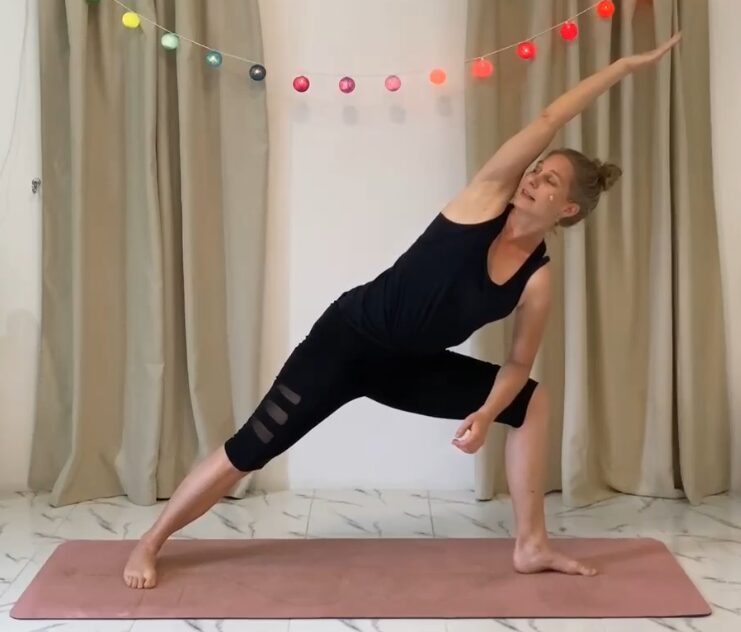
Why does yoga work for your posture?
Yoga is a holistic practice that connects body and mind. If you do yoga regularly, you not only strengthen your body's muscles, but also develop better body awareness. You learn how to align yourself correctly and notice more quickly when you fall into an awkward posture. This mindfulness helps to improve your posture in everyday life.
Yoga not only stretches your flanks, but also opens the chest, stretches the shoulders and encourages deeper breathing. All of this contributes to an upright posture, which in turn prevents back pain and gives you a general feeling of lightness and energy.
Conclusion: Yoga as the key to better posture
If you want to improve your posture and prevent back pain, yoga is one of the most effective ways to achieve long-term results. You can experience a noticeable improvement in your posture, especially through targeted exercises that stretch your flanks. Those who practise yoga regularly usually feel more upright, confident and energetic overall and experience a reduction in pain and an increase in flexibility.
So treat yourself to a regular break on the mat and discover how yoga can not only change your body, but also your posture. Your flanks will thank you - and so will your back!
You can also find more tips for better posture in these blog articles:
